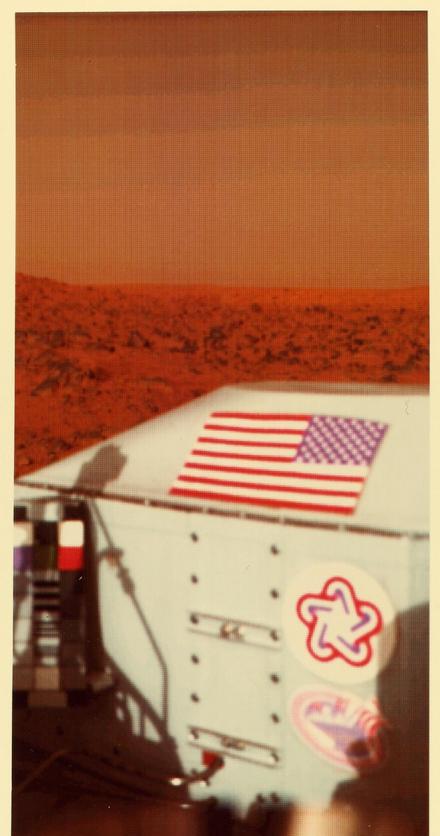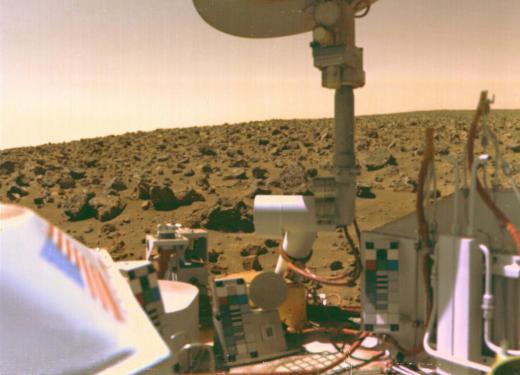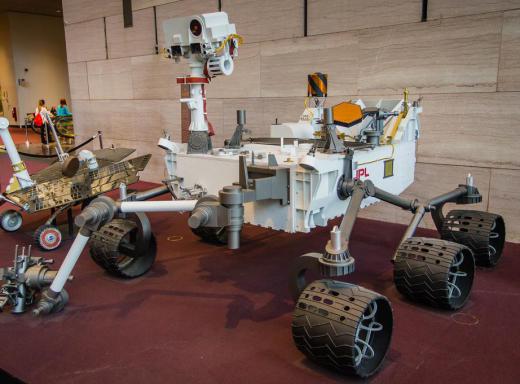What are Some Prominent Features of Mars?
 Michael Anissimov
Michael Anissimov
Mars is likely the most beloved planet in the solar system aside from the Earth. It is featured in the most fiction, and is the subject of the most colonization plans. It was named after various gods of war and chaos in ancient times, because its red appearance is reminiscent of blood. We now know this is due to the large amount of oxidized iron (rust) covering its surface. Mars has an thin, tenuous atmosphere, about 1/100th the density of Earth's, composed primarily of carbon dioxide.
We know more about Mars than any other planet in the solar system besides Earth, in no small part due to the three orbiters and two rovers currently studying the planet and sending back huge amounts of data. Mars' surface has been mapped to a resolution of 0.3 meters by the HiRISE camera on-board the Mars Reconnaissance Orbiter, and two Mars Exploration Rovers, Spirit and Opportunity have been scooting around the surface of the planet since January 2004, powered by solar panels. In the first three years of operation the rovers have each traversed a path about 10 km in length.

Mars orbits about 1.6 AUs (Earth-Sun distances) from the Sun, with a 686-day year. It has a surface temperature ranging from −5 °C during the day to −87 °C at night. With a surface gravity of .37 g and a mass only 10% of the Earth's, Mars is somewhere between the Earth and the Moon in terms of its mass. (The Moon's mass is roughly 1% that of Earth's.) It is the site of the largest known mountain in the solar system, Olympus Mons, several times the height of Mt. Everest, and the largest canyon, Valles Marineris, which runs across almost a quarter of its circumference.

On 14 January 2004, George W. Bush announced a Vision for Space Exploration which mentioned a goal of sending crewed missions to Mars around 2030. A manned Mars mission would take several years to make it to the planet, and more research is needed to test the behavior of humans when locked up in a small space for that length of time. Several space agencies have issued calls for volunteers for such projects.

If humans do eventually make it to Mars, it would likely be easier to set up an outpost than on the Moon. Mars has a richer spectrum of elements than the Moon, as well as an atmosphere that would protect against cosmic rays somewhat. It also has a temperature much closer to that of the Earth, and vast reserves of ice in its polar ice caps. Of course the downside of Mars is its large distance from the Earth. We might need better propulsion systems before building a Mars colony becomes practical.
AS FEATURED ON:
AS FEATURED ON:














Discuss this Article
Post your comments